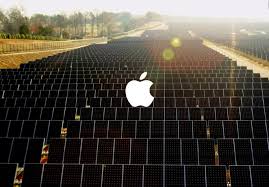
Apple Inc. (NASDAQ:AAPL) has announced that it has been given the go-ahead to sell its excess solar power to energy films.
The approval came from the Federal Energy Regulatory Commission (FERC) following an application made by Apple on June 6. Apple formed a subsidiary called Apple Energy LLC to handle its electric power generation as well as the sale of excess power. The tech firm has renewable energy facilities and solar firms located in Arizona, California and Nevada. Each of its energy facilities produces 50 megawatts, 130 megawatts, and 20 megawatts respectively. Apple’s energy output in California is enough to supply power to 10,000 homes.
The iPhone maker teamed up with First Solar, Inc. (NASDAQ:FSLR) for its California power generation project. Steve Rodgers from FERC wrote a letter to the company citing that Apple Energy is in line with the requirements of a category 1 seller in all the regions where it will be involved. Apple initially launched the energy production facilities to provide renewable energy for its data centers. However, the facilities have been producing more than enough power, thus the company’s idea to start selling the excess renewable energy.
Apple required a few waivers from FERC regulations. This is because non-energy firms that wish to sell their excess power output are required to sell exclusively to utility companies and at lower rates. The iPhone maker presented an argument that its energy production is too small to cause a significant impact on the power rates in the market and should thus be allowed to sell without being limited by the regulations. Apple is also currently waiting for authorization to sell excess energy from its plant in Campus 2 in Cupertino which is still under construction.
The new campus sits on 176 acres of land will become the main campus in 2017. The campus will be powered by 100% renewable energy most of which will be generated by photovoltaics and fuel cells in the same location. The campus alone will produce 14 megawatts of electricity.




